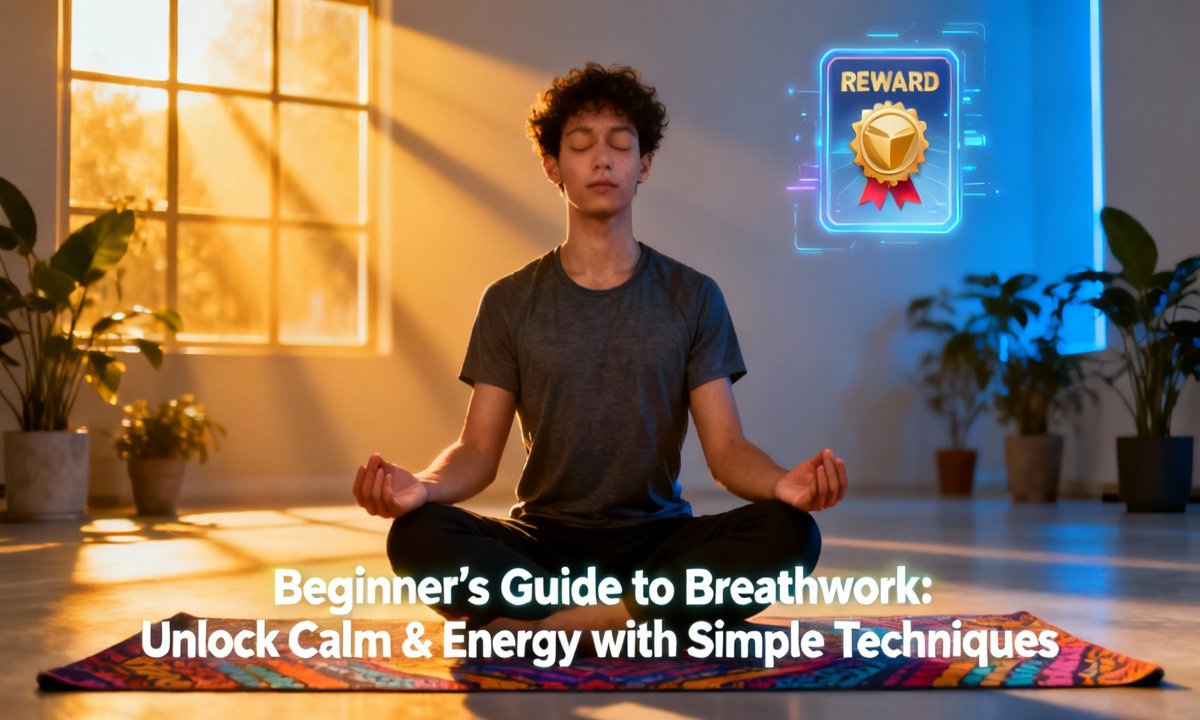Breathwork, a practice involving conscious control of your breath, offers a simple yet profound path to enhancing mental, emotional, and physical well-being. By intentionally directing your breathing patterns, you can cultivate inner calm, sharpen focus, and boost your energy levels throughout the day. It’s a powerful tool, accessible to everyone, requiring no special equipment, and can be practiced virtually anywhere.
Understanding Breathwork and Its Benefits
At its core, breathwork is about using specific breathing techniques to influence your body’s internal state. This ancient practice, now supported by modern science, teaches you how mindful breathing can effectively unlock calm breathwork and boost energy breathing. Even brief sessions can lead to noticeable improvements in mood, clarity, and overall vitality, helping to build resilience against daily stressors.
The Science Behind Your Breath
Intentional deep breathing actively engages your parasympathetic nervous system, responsible for promoting rest and relaxation. Research, including studies from the Mayo Clinic, indicates this can reduce heart rate, lower blood pressure, and alleviate anxiety. Furthermore, the National Institutes of Health suggests that regular mindful breathing exercises contribute to improved focus and mental clarity.
Simple Breathwork Techniques for Instant Calm
When seeking immediate stress relief or aiming to center yourself before a busy period, several easy breathing exercises can be practiced right away. These techniques are designed to quickly soothe your nervous system and bring you into a more balanced state.
4-7-8 Breathing for Relaxation
To practice this calming method, sit comfortably with your back supported. Inhale quietly through your nose for a count of four. Hold your breath for a count of seven, then exhale slowly through your mouth for a count of eight. Repeat this cycle up to four times. This technique is also known to help improve sleep when done before bedtime.
Box Breathing for Focus
Popularized for its effectiveness in enhancing focus and mental steadiness, box breathing involves a rhythmic four-count pattern. Inhale for four counts, hold for four counts, exhale for four counts, and then hold again for four counts. Repeating this pattern is ideal during stressful moments or before important tasks.
Diaphragmatic Breathing for Grounding
Place one hand on your chest and the other on your belly. Inhale deeply, focusing on expanding your belly, not just your chest. Then, exhale slowly as your belly falls. This fundamental mindful breathing exercise helps reinforce calm and firmly grounds you in the present moment.
Energizing Breathwork for Focus & Vitality
When your energy levels dip, certain breathwork techniques can provide a quick and effective reboot. These practices, such as Kapalabhati and paced breathing, are designed to invigorate both your body and mind, helping you regain focus and vitality.
Kapalabhati (Skull Shining Breath)
This traditional yogic breath is an energizing technique often used in the mornings or during post-lunch slumps. While sitting tall, take a deep inhale, then forcefully exhale through your nose by pumping your belly inward. Allow the inhale to happen naturally after each exhale. Repeat quickly for 20-30 cycles (consult your doctor if you have health issues before trying).
Paced Breathing for Sustained Energy
Also known as “resonant breathing,” this technique involves slow, steady inhales and exhales, typically lasting five seconds each. Using a timer can help maintain consistency. Practiced regularly, paced breathing can regulate energy levels and help maintain alertness throughout the day.
Integrating Breathwork into Your Daily Routine
Making breathwork a consistent part of your day can significantly enhance your well-being. Even short, intentional practices can yield substantial benefits, transforming how you approach various moments.
Quick Morning Practices
Begin your day with five minutes of 4-7-8 or diaphragmatic breathing to clear morning mental fog and set a calm intention. Pairing breathwork with morning sunlight or a quiet cup of tea can further amplify its positive effects.
Midday Stress Relief
When midday stress arises, take a brief break for box breathing. This quick reset sharpens your mind, helps manage distractions, and can easily fit into your workflow or home routine. To further optimize your environment for relaxation, consider exploring ways to improve air quality with houseplants.
Evening Relaxation Rituals
Wind down before bed with gentle diaphragmatic breathing or 4-7-8 breathing. Combining breathwork with other relaxing activities, such as soft lighting or calming music, signals your body that it’s time to rest. This practice is especially effective after a busy week or demanding household chores. To enhance your calming space, you might find inspiration in Eco-Chic Home Decor that boosts energy efficiency and comfort.
Common Breathwork Mistakes to Avoid
As you develop a regular breathwork habit, being aware of common pitfalls can help you practice more effectively. Avoiding these mistakes ensures you gain the most benefit from your efforts.
Avoid shallow chest breathing, focusing instead on deep belly breaths. Try not to force inhales or exhales; allow them to flow naturally. Practice in a calm environment, free from noise or stress that might distract your focus. Always find a comfortable and supportive seat or posture before beginning your practice. Remember that it’s normal for your mind to wander; gently guide your attention back to your breath without judgment.
Frequently Asked Questions About Breathwork
Many individuals have questions when beginning their breathwork journey. Understanding these common inquiries can help clarify the practice and ensure a safe and effective experience.
Is breathwork safe for everyone?
Most simple breathwork techniques are generally safe. However, individuals with respiratory or cardiovascular conditions should consult a healthcare professional before starting. Always begin slowly and pay attention to how you feel. For more advanced practices, it’s advisable to consult certified breathwork facilitators or healthcare providers.
How long should I practice breathwork?
Even a short practice of two to five minutes daily can yield significant benefits. As you become more comfortable, you can gradually increase your session length to 10 or 15 minutes. Consistency is crucial, as regular practice over intense, infrequent sessions brings the greatest rewards.
Can breathwork help with anxiety?
Numerous studies, including those noted by the NIH on breathing and anxiety, confirm that slow, conscious breathing techniques can reduce symptoms of anxiety. This works by signaling the nervous system to relax and helps shift focus away from anxious thoughts, often as part of a broader self-care plan.
Your Journey to a Calmer, More Energized Self
Breathwork offers an invitation to pause, reset, and take charge of your well-being. With this guide, you now possess the fundamental tools to effectively unlock calm breathwork and boost energy breathing in your daily life. Remember, consistency is more important than perfection; even five minutes of daily practice can bring about a significant difference.
To further elevate your wellness journey, consider pairing these practices with a supportive home environment. Explore strategies to transform your space for better comfort & savings and discover smart home upgrades that save energy to enhance your tranquil living space. For more evidence-based resources and mindful living tips, keep checking our website for updates and new wellness guides.



